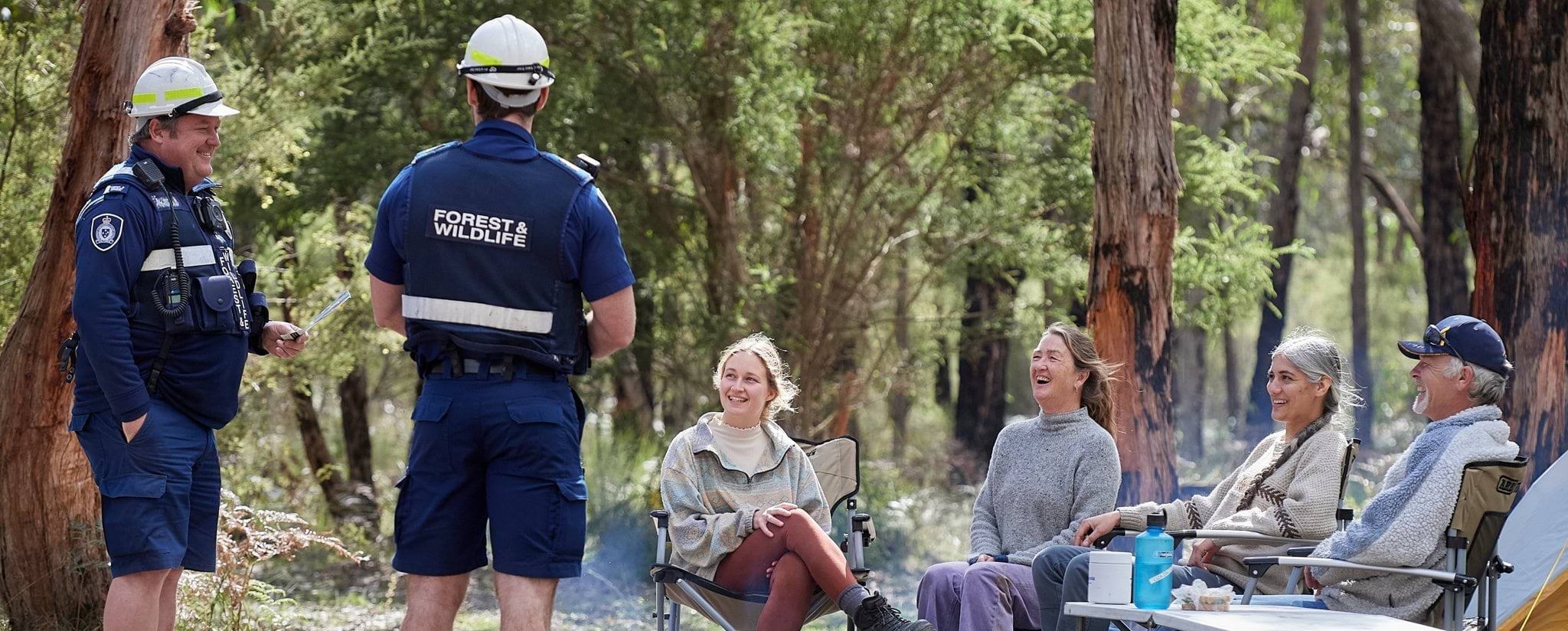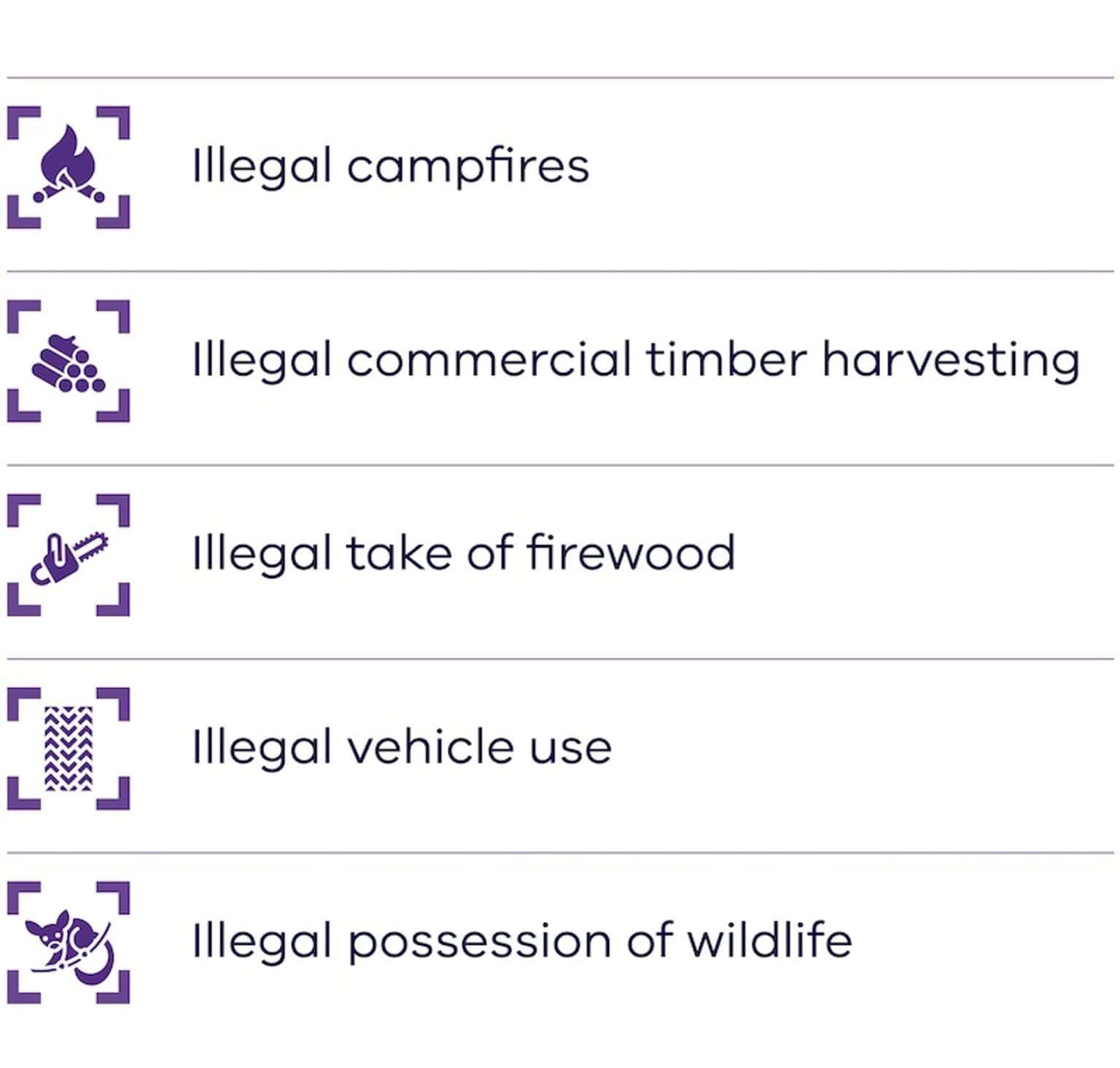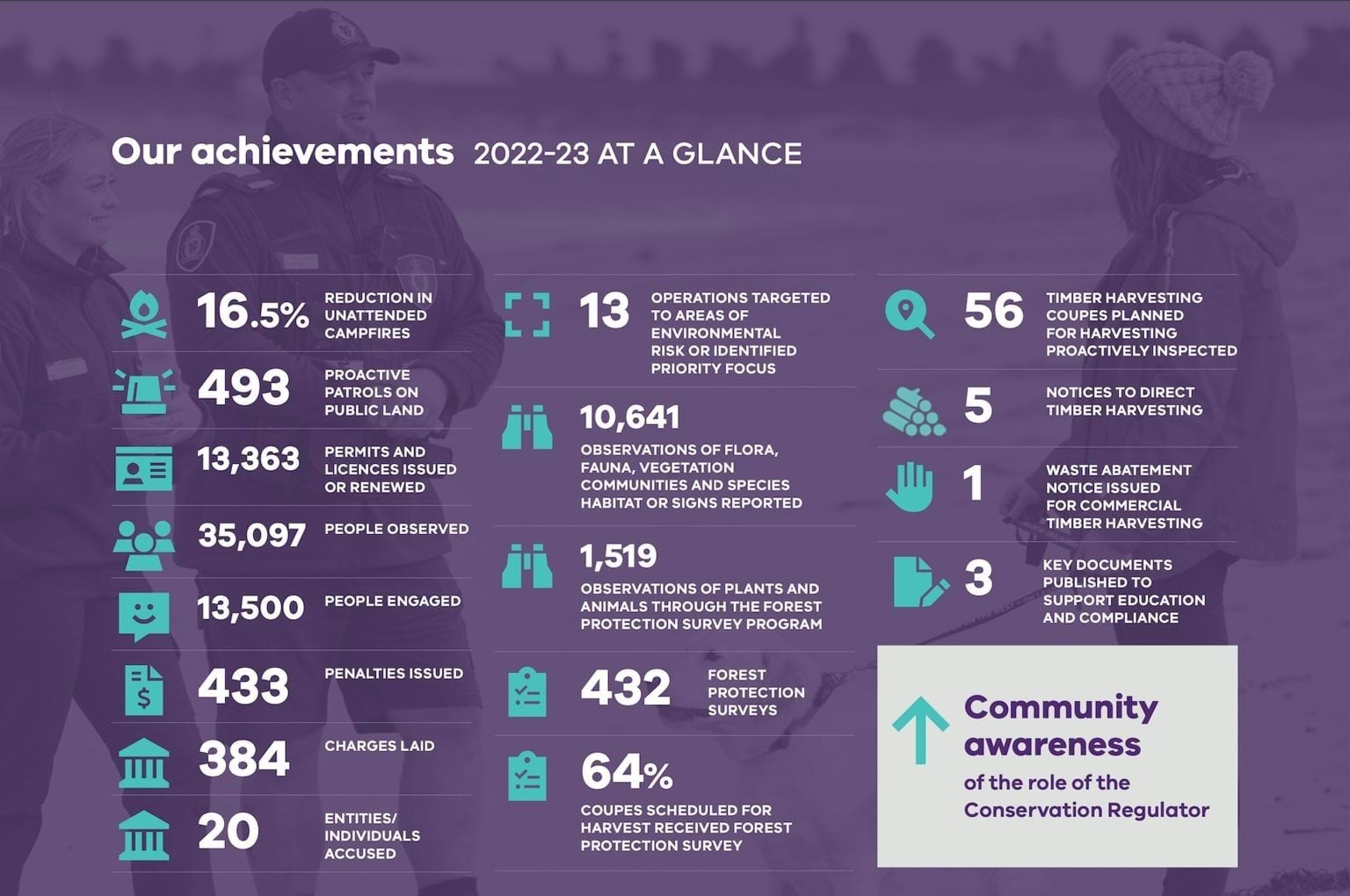The Conservation Regulator oversees the regulation of timber harvesting, public land use, biodiversity, and fire prevention. We are a specialist regulator, established within the Department of Energy, Environment and Climate Action (DEECA).
We have refined our regulatory practice over the last four years and continue to strive to improve our operation and procedures. We continue to focus on opportunities for collaboration and strengthening our relationships with Victorian communities, Traditional Owners, land managers, co‑regulators, and other stakeholders.
Our mission
To be an effective, trusted, best practice regulator.
Our vision
To create and maintain liveable, inclusive, sustainable communities and thriving natural environments.
Our regulatory outcomes
We regulate to achieve three key outcomes:
- Equitable and safe access to public land and use of natural resources
- Protected natural and heritage values
- Sustainable communities – social, economic, and environmental.
Our regulatory priorities
Regulatory priorities support the Conservation Regulator to focus efforts on the greatest environmental risk and what is most important to the Victorian community.
In 2022–23, our regulatory priorities remained unchanged given the continued trends of high public land visitation, increased sales of off-road vehicles, demand for native wildlife as pets, changes in energy demands increasing illegal firewood theft, and consistently high numbers of illegal campfires, particularly over public holiday periods.
Progress on our regulatory priorities outlines our progress against addressing each of these regulatory priorities.
Our compliance and enforcement approach
The Conservation Regulator focuses its effort where there are the most significant risks to maximise the outcomes achieved. We do this by considering:
- The level of risk non-compliance poses to our regulatory outcomes.
- Our ability to reduce risk to our regulatory outcomes.
- The most effective use of our regulatory resources.
This approach recognises that it is not practical or appropriate to take compliance and enforcement action in response to every alleged or suspected breach. Our effort and actions will be focused where there is the greatest risk to our regulatory outcomes and where we can efficiently and effectively reduce that risk.
We consider factors such as whether breaches of the law were intentional, reckless or repeated, and the impact of the breach in our decision making. This means that our approach will shift depending on the circumstance from providing information and advice about how to comply with the law through to imposing fines, cancelling licences and permits, or prosecuting for serious offending.
We monitor compliance with the law to prevent harm to the environment wherever possible. Through monitoring we identify non-compliance and maintain a credible threat of detecting those who are engaging in illegal activities.
We also take preventative action through media, engagement, and educational activities, to raise awareness of regulatory requirements and how to comply with the law, responding to reports of crime as they arise.
Updated



